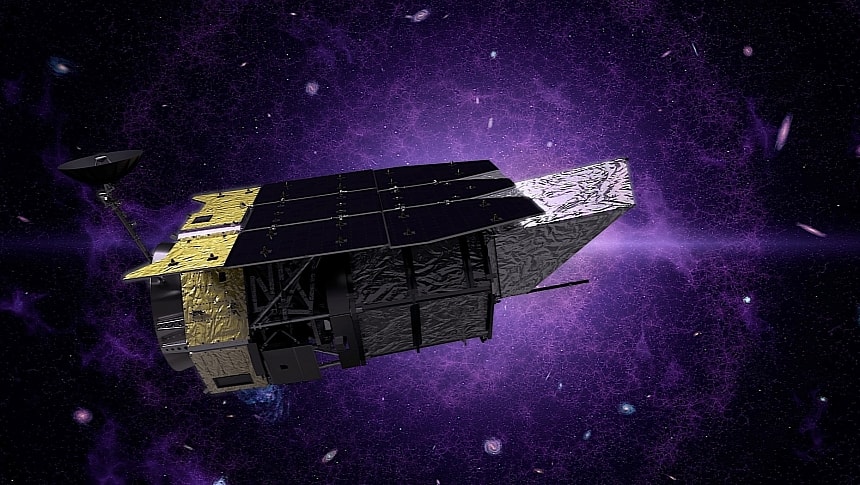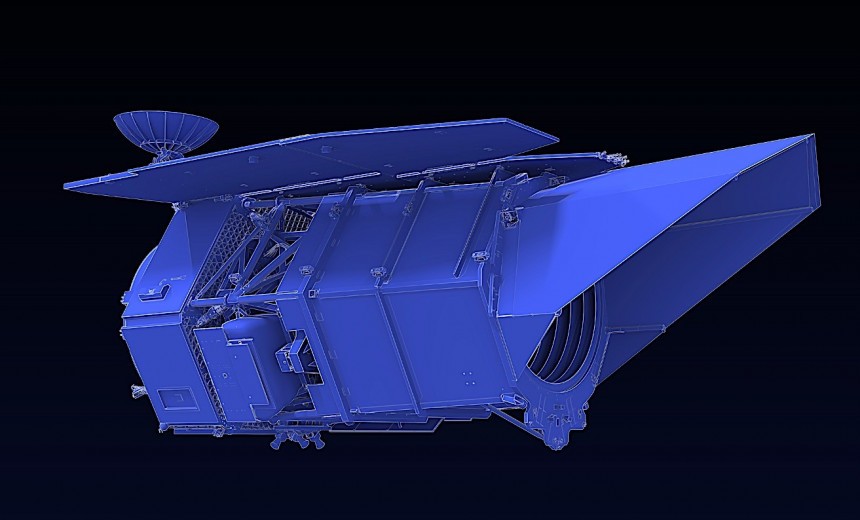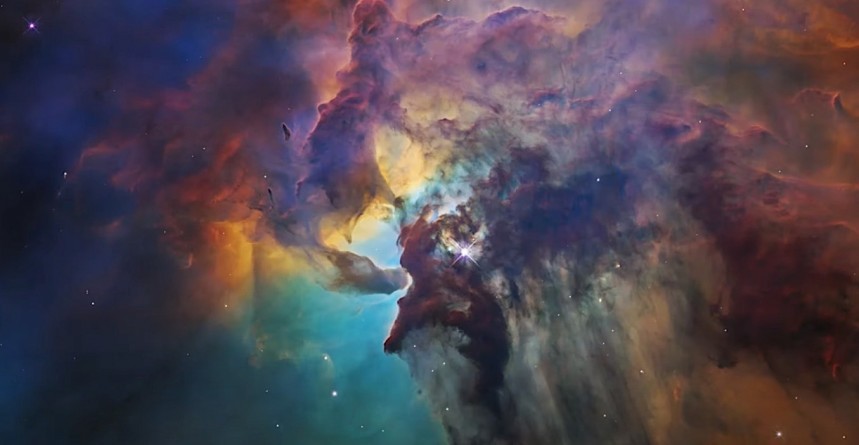Over the past few years, the James Webb Space Telescope (JWST) stole the spotlight when it comes to incredible pieces of hardware that are meant to unlock the mysteries of the Universe. And for good reason, as this incredible and very expensive tool is doing science like nothing before it.
But it, too, will soon be dwarfed by something much better, because this is the nature of things. And that something better is called the Nancy Grace Roman Space Telescope, formally known as the Wide Field Infrared Survey Telescope (WFIRST).
Named after the American scientist who is considered the mother of another impressive telescope, the Hubble, Roman will basically use infrared and optical instruments to look far back in space and time and unravel even more mysteries of our Universe. It will mainly look at dark energy and exoplanets, but also at stars and everything that sits between them.
The Roman is scheduled to lift off onboard a Falcon Heavy rocket no sooner than 2027 (two years ago the launch was targeted for 2026).
The spacecraft (we'll call the entire assembly that because, well, that's what it technically is) is centered around the main telescope, a 2.4 meter (7.9 feet) wide primary mirror. Backing it are two specialized instruments, the Wide Field Instrument (WFI) and the Coronagraphic Instrument (CGI).
The former, a multi-band visible and near-infrared camera, will be pointed at the sky and should give NASA a much wider (by about 100 times) field of view than what the Hubble is capable of. Thanks to this trait, it should be able to uncover about 2,600 exoplanets in five years, which is how long the primary Roman mission is expected to last.
The second instrument, the CGI, is there to block out the direct light of a star, allowing the Roman telescope to directly see planets discovered with the help of the WFI.
All of the above is part of the telescope's primary mission, but NASA is looking forward to accepting scientific ideas from interested parties. And the first-ever general astrophysics survey was just announced.
It's called the Galactic Plane Survey, and NASA describes it as "an unprecedented survey of the plane of our Milky Way galaxy," meant to map "more of our galaxy's stars than all previous observations combined."
The idea is too recent to be fully detailed, but the people behind it have been working on fine-tuning the details for years, and first submitted a white paper on the project in 2021. It took NASA and its partners a long time to accept it, and they did so because the Galactic Plane Survey "was the top-ranked submission" for Roman science.
You see, although we now know a lot about the distant Universe, the same cannot be said about the immediate neighborhood, the Milky Way galaxy. Its plane, the imaginary plane that cuts it into two halves, top and bottom, is so large that it could take an impossible amount of time to study it all. Then, the dust floating around the galaxy makes it difficult to distinguish anything of value with our current tools.
There have been attempts at getting a better picture of what lies beyond the galactic center. The Spitzer Space Telescope, for instance, was used to look at the galactic plane, and it did reveal some star-forming regions there. But it still didn't give us a proper look at the place because of its limitations and raised more questions than answers.
It's very possible that Roman will answer those questions. Looking deeper into the place than anything else before it, it should provide a "pretty close to a complete census of all the stars in our galaxy," and it should be able to do that in just about a month.
That's because the Roman could easily cover 1,000 square degrees of the sky, potentially revealing in the process 100 billion cosmic objects. By comparison, say the scientists behind the idea, it would take the James Webb decades to do the same thing.
Compared to the Gaia mission of the European Space Agency (ESA), which mapped over one billion stars within about 10,000 light-years, Roman has the potential to map 100 billion of them located as far as 100,000 light years, and even beyond.
Of course, finding them doesn't also mean we'll immediately know where all the stars in our galaxy are. It will probably take many years for astronomers to go through the immense amount of data Roman will generate during its survey of the stars.
But along with knowledge about the Milky Way's star locations we should also get a better comprehension of stars' temperatures, their current stage, composition, and size. There are even hopes our kind will get a better understanding of the main components of the Milky Way, namely the central region (the bulge), the bar, and the spiral arms that give it its distinctive shape.
Named after the American scientist who is considered the mother of another impressive telescope, the Hubble, Roman will basically use infrared and optical instruments to look far back in space and time and unravel even more mysteries of our Universe. It will mainly look at dark energy and exoplanets, but also at stars and everything that sits between them.
The Roman is scheduled to lift off onboard a Falcon Heavy rocket no sooner than 2027 (two years ago the launch was targeted for 2026).
The spacecraft (we'll call the entire assembly that because, well, that's what it technically is) is centered around the main telescope, a 2.4 meter (7.9 feet) wide primary mirror. Backing it are two specialized instruments, the Wide Field Instrument (WFI) and the Coronagraphic Instrument (CGI).
The former, a multi-band visible and near-infrared camera, will be pointed at the sky and should give NASA a much wider (by about 100 times) field of view than what the Hubble is capable of. Thanks to this trait, it should be able to uncover about 2,600 exoplanets in five years, which is how long the primary Roman mission is expected to last.
The second instrument, the CGI, is there to block out the direct light of a star, allowing the Roman telescope to directly see planets discovered with the help of the WFI.
It's called the Galactic Plane Survey, and NASA describes it as "an unprecedented survey of the plane of our Milky Way galaxy," meant to map "more of our galaxy's stars than all previous observations combined."
The idea is too recent to be fully detailed, but the people behind it have been working on fine-tuning the details for years, and first submitted a white paper on the project in 2021. It took NASA and its partners a long time to accept it, and they did so because the Galactic Plane Survey "was the top-ranked submission" for Roman science.
You see, although we now know a lot about the distant Universe, the same cannot be said about the immediate neighborhood, the Milky Way galaxy. Its plane, the imaginary plane that cuts it into two halves, top and bottom, is so large that it could take an impossible amount of time to study it all. Then, the dust floating around the galaxy makes it difficult to distinguish anything of value with our current tools.
There have been attempts at getting a better picture of what lies beyond the galactic center. The Spitzer Space Telescope, for instance, was used to look at the galactic plane, and it did reveal some star-forming regions there. But it still didn't give us a proper look at the place because of its limitations and raised more questions than answers.
It's very possible that Roman will answer those questions. Looking deeper into the place than anything else before it, it should provide a "pretty close to a complete census of all the stars in our galaxy," and it should be able to do that in just about a month.
Compared to the Gaia mission of the European Space Agency (ESA), which mapped over one billion stars within about 10,000 light-years, Roman has the potential to map 100 billion of them located as far as 100,000 light years, and even beyond.
Of course, finding them doesn't also mean we'll immediately know where all the stars in our galaxy are. It will probably take many years for astronomers to go through the immense amount of data Roman will generate during its survey of the stars.
But along with knowledge about the Milky Way's star locations we should also get a better comprehension of stars' temperatures, their current stage, composition, and size. There are even hopes our kind will get a better understanding of the main components of the Milky Way, namely the central region (the bulge), the bar, and the spiral arms that give it its distinctive shape.


























